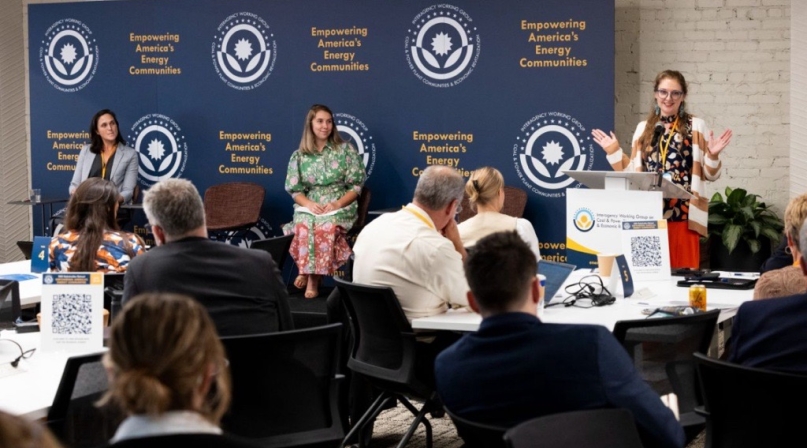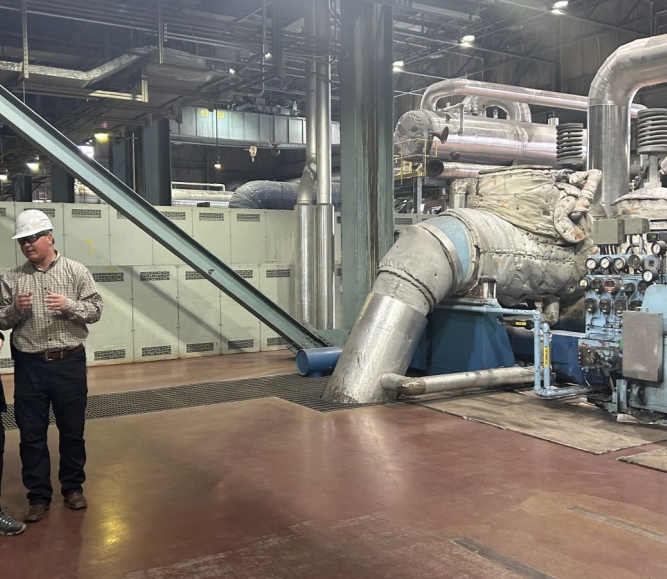BRECC Engaging in Dynamic Dialogue with the Energy Communities IWG
Author
Upcoming Events
Related News

Coal-impacted counties are partnering with The Interagency Working Group on Coal & Power Plant Communities & Economic Revitalization (referred to as the Energy Communities IWG) to navigate federal systems and leverage opportunities for government support. This July, the Interagency Working Group on Coal & Power Plant Communities and Economic Revitalization convened local and national stakeholders in Washington, D.C. to discuss local challenges and solutions through community-based partnerships. This Stakeholder Retreat entitled, “Empowering American’s Energy Communities”, covered timely announcements around technical assistance, capacity building and community benefit plans for coal communities, demonstrating the Energy Communities IWG responsiveness to needs expressed by coal communities.
BRECC & The Energy Communities IWG:
Several members of NACo's Building Resilient Economies in Coal Communities (BRECC) initiative attended the July Stakeholder Retreat for the unique opportunity to connect with federal stakeholders as well as fellow community leaders.
The event featured Floyd County, Kentucky and showcased the county’s strategic planning efforts accomplished through the BRECC Action Challenge. Ruthie Caldwell, a project management consultant and member of the Floyd County BRECC Action Challenge team, presented on Floyd County’s BRECC Economic Diversification Plan and how this strategic plan has enabled the county to leverage additional resources for local economic development. Floyd County applied for was successfully awarded a $100,000 grant from the Department of Energy for Capacity Building for Repurposing Energy Assets. The grant will support the development an interactive asset map of Floyd County.
BRECC Coalition member, Sharon Fain, a certified economic developer and Wyoming-based energy consultant, also attended the Energy Communities IWG Stakeholder Retreat and shared, “being engaged in these conversations, focused on funding and technical assistance, allows industry and local leaders the opportunity to identify gaps and programs that may have otherwise gone unnoticed. IWG’s early, and direct, engagement of stakeholders, allowed communities to seize opportunities they wouldn’t have pursued before – such as NACo’s BRECC programming.”
Read below for how counties are utilizing the Energy Communities IWG’s resources.
If you’re new to the Energy Communities IWG…
If you haven’t heard of the Energy Communities IWG, this interagency working group was established in January 2021. The federal government recognized the shifting economic landscape of energy communities and elected to coordinate inter-agency communications and resources through the IWG (citation: the executive order). Members of the IWG include:
- the Secretary of the Treasury
- the Secretary of the Interior
- the Secretary of Agriculture
- the Secretary of Commerce
- the Secretary of Labor
- the Secretary of Health and Human Services
- the Secretary of Transportation
- the Secretary of Energy
- the Secretary of Education
- the Administrator of the Environmental Protection Agency
- the Director of the Office of Management and Budget
- the Assistant to the President for Domestic Policy and Director of the Domestic Policy Council, and
- the Federal Co-Chair of the Appalachian Regional Commission.
The Energy Communities IWG engages with state and local officials, specifically county governments, community groups, labor unions, corporations, investors, institutions of higher education and philanthropic groups.
Key Resources:
Over the past two years, the Energy Communities IWG stood up targeted programs and resources in response to community needs. These include:
- The IWG Getting Started Guide is designed to help coal counties plan for economic transition and diversification. During the development of this resource, the Energy Communities IWG collected feedback from NACo’s BRECC Coalition members, a peer leadership network of 20 representatives from coal-impacted communities. The Getting Started Guide also features best practices on project development from the BRECC Action Challenge team serving the Counties of Coconino, Apache and Navajo, Ariz. Access the getting started guide here.
- The Funding Clearing House provides a one-stop-shop for counties seeking federal funding support. Using this tool, counties can sort by funding type, match requirements, deadlines and project use. Visit the Funding Clearing House here.
- IWG Navigators & Rapid Response Teams are designated personnel available to help answer questions and help coal-impacted communities navigate federal resources. Counties can get in touch with an Energy Communities IWG Navigator by visiting this link.
New Program: Energy Communities AmeriCorps/Vista Fellows
At the July IWG Stakeholder Retreat, “Empowering American’s Energy Communities”, the Energy Communities IWG announced a new opportunity for counties to apply for capacity building support through an Energy AmeriCorps Vista Program. The Energy AmeriCorps program will be composed of 150 full-time members serving in a designated energy community. The Energy AmeriCorps members will engage communities in locally driven economic development projects, workforce development and develop environmental remediation plans. To learn more about the program, follow this link.
Related News

Counties and Railroads: Shared Priorities for the Next Surface Transportation Bill
County leaders from across the country have a vital opportunity to ensure their infrastructure priorities are front and center.

Senators introduce bipartisan UPGRADE Act to support small and rural public water systems
On December 15, Sens. Lisa Blunt Rochester (D-Del.) and Roger Wicker (R-Miss.) introduced the Unincorporated Partnerships for Grant Resources, Assistance, and Drinking Water Enhancements (UPGRADE) Act (S. 3465), a bipartisan bill that would strengthen federal support for small public water systems and helps unincorporated communities access clean and affordable water.

House reintroduces bipartisan legislation to level playing field for rural communities
House reintroduced the Rural Partnership and Prosperity Act, bipartisan legislation intended to advance economic development in rural counties and overcome barriers to obtaining federal funding and resources.
County News
BRECC explores energy transformation of the Cowboy State

